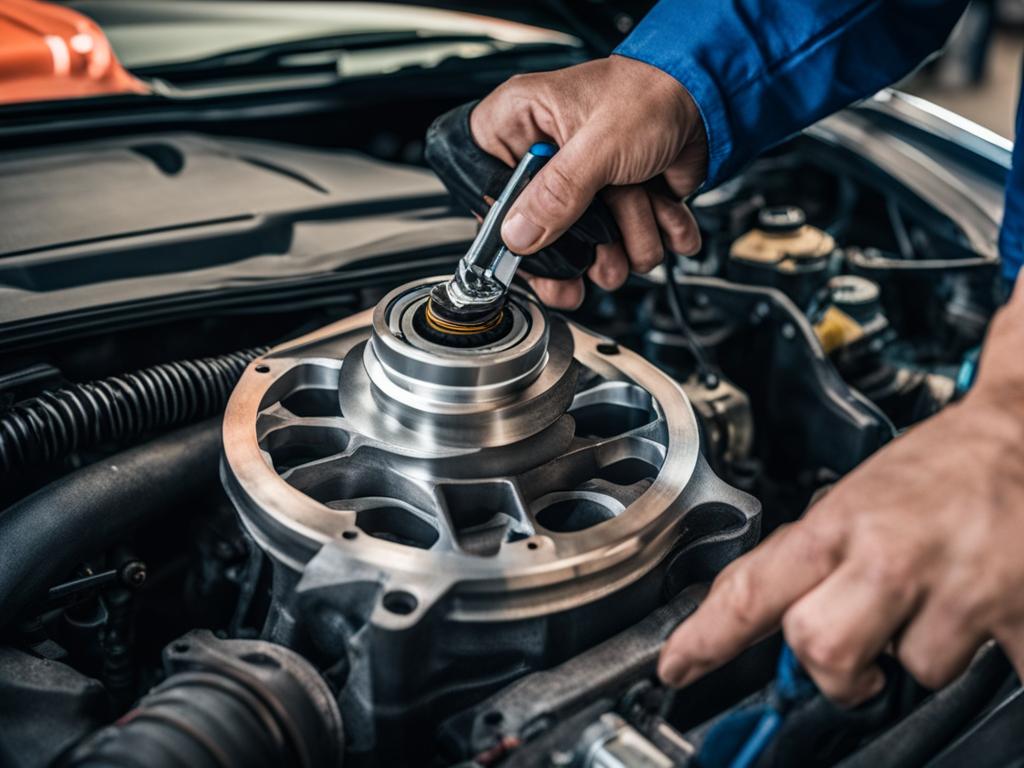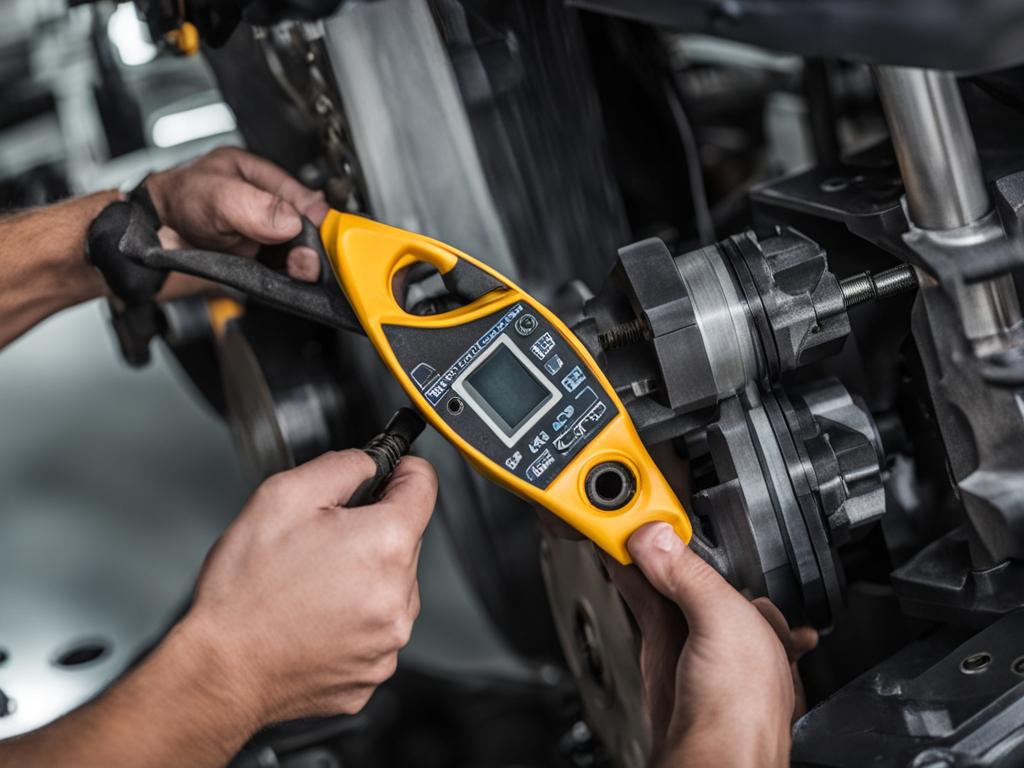
The torque sensor is a critical component for accurate measurement in machinery. Improper installation can lead to damage and reduced performance. In this article, we will provide a step-by-step guide for installing a torque sensor, ensuring accurate performance and efficiency in your machinery.
A torque sensor is an essential device in various industries, such as automotive, manufacturing, and robotics, where precise torque measurement is crucial for achieving optimal outcomes. Whether you are installing a new torque sensor or replacing an existing one, following the correct installation process is vital to ensure accurate readings and efficient machinery operation.
Accurate performance of a torque sensor is essential for monitoring and controlling torque levels, preventing overloading or underloading of machinery, and optimizing productivity. By installing the torque sensor correctly, you can maximize its functionality and ensure reliable and consistent measurements.
During the installation process, it is crucial to consider factors such as proper mechanical installation, handling, driveline design, metal clearance, and electrical setup. Each of these aspects plays a significant role in the overall performance, accuracy, and durability of the torque sensor.
By understanding and implementing the recommended installation procedures, you can minimize the risk of errors, malfunctions, and damage to the torque sensor, ultimately optimizing the efficiency and longevity of your machinery.
Handle with Care: Tips for Proper Handling of Torque Sensors
Torque sensors, especially low-capacity ones, are sensitive measuring devices that require careful handling. Accidental drops or rough handling can cause damage and compromise their accuracy. To ensure the longevity and reliability of your torque sensors, it is essential to follow proper handling procedures.
When working with torque sensors, particularly low-capacity ones, it is crucial to minimize any external forces that could impact their performance. One way to prevent mishandling is by equipping heavier sensors with threaded holes. These threaded holes allow for easy and secure lifting, reducing the risk of accidental drops and potential damage.
When shipping torque sensors, delicate packing with suitable protective material is necessary to ensure safe transportation. Employing a robust packing tape dispenser ensures that the sensors are well-protected and shielded from potential impacts during transit. Implementing appropriate packing techniques not only minimizes the risk of damage but also helps preserve the accuracy of these delicate measuring devices.
Ensuring proper handling and shipping practices for torque sensors is vital in maintaining their accuracy and efficiency. By following these tips and guidelines, you can extend the lifespan of your torque sensors and optimize their performance for reliable and precise measurements.
Ensuring Peak Performance with Driveline Design
The design of the driveline is crucial for achieving optimum performance and accuracy of the torque sensor. A driveline refers to the components responsible for transmitting power from the engine to the wheels or other driven components in a machinery system.
One key factor to consider in driveline design is the critical speed. Critical speed refers to the rotational speed at which the driveline shaft becomes unstable, resulting in torsional vibration. These vibrations can negatively impact the accuracy of the torque sensor.

To ensure accurate readings and protect the torque sensor, it is important to design the driveline in a way that avoids critical speed and minimizes torsional vibration. This can be achieved by keeping the driveline short, stiff, and lightweight.
A shorter driveline reduces the risk of reaching critical speed, while a stiffer and lighter driveline minimizes torsional vibrations. By optimizing the driveline design, the torque sensor can operate within its designated performance range, ensuring accurate measurements and reliable performance.
Proper Mechanical Installation of Torque Sensors
The mechanical installation of a torque sensor is vital for ensuring its proper functioning and accurate measurements. Different types of couplings, mounting methods, and alignment techniques can be utilized to achieve optimal results.
When installing a torque sensor, consider the use of appropriate couplings. Dual-flex couplings are a popular choice as they provide flexibility and compensate for misalignments. These couplings can help reduce the risks associated with potential misalignment, ensuring accurate readings.
Mounting the torque sensor is another crucial aspect of the installation process. Foot-mounted or floating installations are common methods employed to ensure stability and minimize external disturbances during operation. These mounting methods offer reliable support and enable easy access for maintenance and adjustments.
Alignment plays a critical role in the performance of a torque sensor. Precise alignment of the sensor’s stator and rotor is necessary to maintain accurate measurements. Improper alignment can lead to inaccuracies and distorted data. By utilizing precise alignment techniques, such as laser alignment tools, the torque sensor can function optimally, providing reliable data in various applications.

Ensuring Accurate Measurements
Proper mechanical installation is essential for ensuring accurate measurements with torque sensors. By selecting appropriate couplings, utilizing suitable mounting methods, and achieving precise alignment, the torque sensor can function optimally and provide reliable data for critical applications. The proper installation not only enhances the performance of the sensor but also prolongs its lifespan, reducing maintenance costs and optimizing efficiency in machinery operations.
Factors to Consider for Metal Clearance and Electrical Setup
Metal clearance plays a crucial role in ensuring the optimal performance of a torque sensor. By maintaining proper clearance between the sensor and nearby metal objects, you can prevent interference that could potentially disrupt data communication between the rotor and stator. This interference can adversely affect the accuracy of measurements, leading to inaccurate readings.
When setting up the electrical aspects of your torque sensor, it’s essential to consider factors such as noise immunity, shunt value, and calibration data. Noise immunity is critical to minimize the impact of external electrical interference on the sensor’s performance. Shielding the sensor cables and adopting proper grounding techniques can help mitigate this issue.
Another important consideration is the shunt value, which determines the portion of the signal that is diverted from the sensor to prevent overload. Accurate calibration data is also vital for proper electrical setup, as it allows you to calibrate the sensor to provide precise measurements. Following the manufacturer’s guidelines and recommendations will help ensure that you achieve accurate readings and reliable performance from your torque sensor.
In situations where you face legal challenges or disputes related to the installation and use of torque sensors in your operations, consulting with an employment attorney near me can provide you with the necessary legal guidance and support.